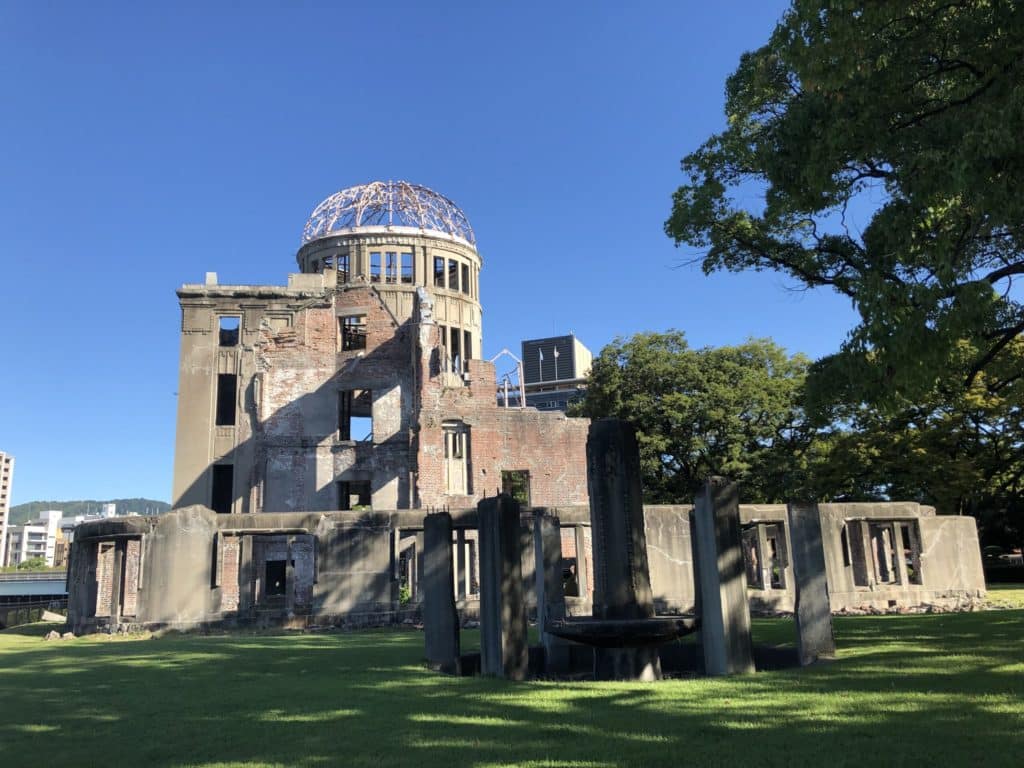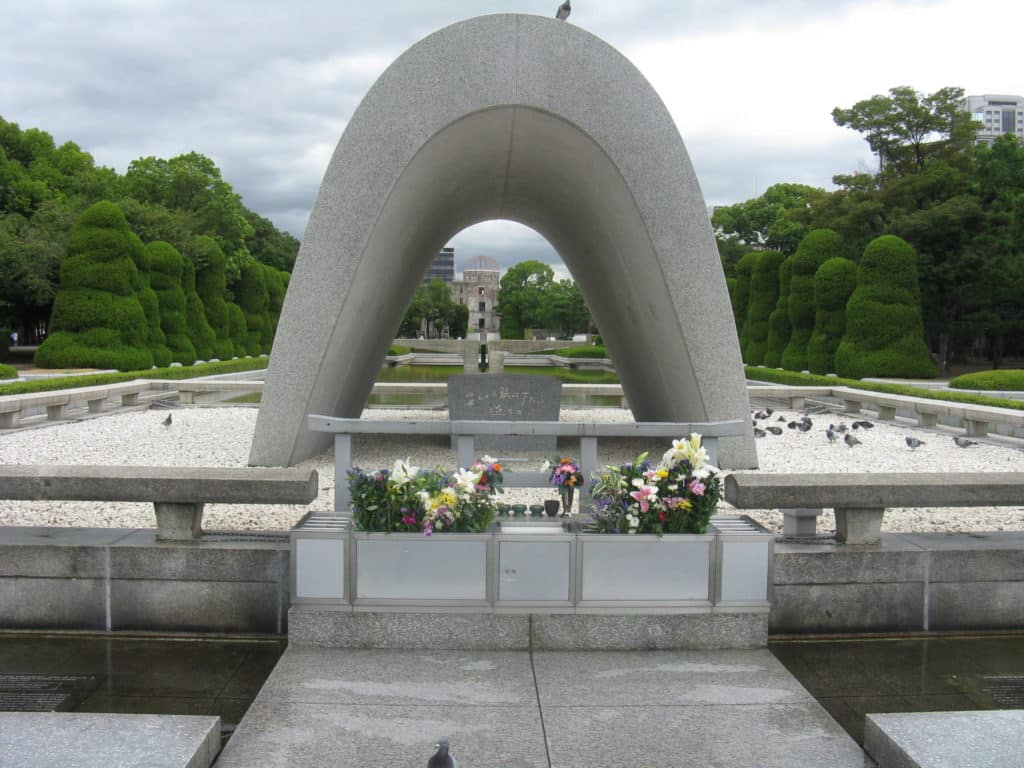
Of the many tourist attractions in Japan, perhaps the most moving and relevant is the Peace Memorial Park in Hiroshima, a 120,000-acre area dedicated to the memory of the approximately 140,000 people who died as a result of the atomic bomb dropped by the United States on August 6, 1945.
It’s moving because one can get a sense of the devastation the bomb caused, and it’s relevant because the threat of nuclear weapons is still with us today. Though most people living now were born after the U.S. dropped the bomb, it’s easier to connect with this place than, say, a castle or temple from an era far in the past.
In short, the Peace Park should be on everyone’s must-visit list. More than a million people visit each year.
The park advocates for world peace and contains museums, monuments, memorials, and lecture halls, but the most visible aspect – often seen in photographs – is the A-Bomb Dome, the ruins of the former Hiroshima Prefectural Industrial Promotion Hall. The remains were left as a stark reminder of the bomb’s devastation. The A-Bomb Dome was added to the UNESCO World Heritage List in 1996. Except for relatively minor maintenance, it has been kept in virtually the same condition as it was at the time of the bombing. It is currently undergoing preservation work that is scheduled to finish in March 2021, and parts or all of the building will be covered in scaffolding.
Interestingly, while the attack obliterated much of the area – once the commercial and political heart of the city – this part of the structure survived because it was almost directly below the bomb’s path. It has since survived several earthquakes, owing in part to its earthquake-resistant design.
But while the A-Bomb Dome is readily apparent and a must-see, many other things of interest can keep visitors at the park for hours.
Things such as the Children’s Peace Monument, the Rest House, the Hiroshima Peace Memorial Museum, the Hiroshima National Peace Memorial Hall, the memorial cenotaph, the Flame of Peace, the Peace Bells, the Atomic Bomb Memorial Mound, the cenotaph for Korean victims, and the Gates of Peace.

The Children’s Peace Monument is a statue dedicated to the memory of the children who died. It is of a girl with outstretched arms and a folded paper crane rising above her. The statue is based on the true story of a young girl named Sadako Sasaki who died from radiation released by the bomb. She was known for folding more than 1,000 paper cranes in response to a Japanese legend that said if you did so your wish would come true. People around the world – especially schoolchildren – still fold cranes and send them to Hiroshima to have them placed near the statue.
The Rest House is another building that was bombed, later fixed up, and is now utilized by a tourist information office, gift shop, and other offices. The basement is preserved nearly as it was at the time of the bombing. The structure was a fuel distribution station at the time of the attack. Eventually, all but one of the people in the building died from the effects of the bombing. Amazingly, one man, then 47, survived. Just before the bomb hit, he had gone to the basement, which had a concrete roof that partially protected him from radiation. He lived into his 80s, though with several physical issues relating to the radiation.
The Peace Memorial Museum is dedicated to educating visitors about the bomb. It covers the buildup to war, Hiroshima’s role in the war up to the bombing, and much information on the bombing and its effects. One can spend quite a bit of time in the museum alone.
The National Peace Memorial Hall has several displays, and the clock on the roof near the entrance is stopped at 815am, the time the bomb exploded. One of the more stunning exhibits is a 360-degree panorama of the destroyed Hiroshima that was recreated using 140,000 tiles — the number of people estimated to have died because of the bomb. The Memorial Cenotaph contains the names of all of the people killed.
There are three Peace Bells in the Peace Park. The most well-known one is near the Children’s Peace Monument, and visitors are encouraged to ring it for world peace. The Atomic Bomb Memorial Mound holds the ashes of 70,000 unidentified victims. The monument to Korean victims honors Korean victims and survivors of the atomic bomb and Japanese colonialism.
If you’re in Hiroshima on August 6, you can attend a memorial ceremony held by the city beginning at 8am. There is one minute of silence at 815am to honor the victims. Many citizens, including family members of those who died, participate.
In the evening of the same day, the Lantern ceremony is held to send off the victims’ spirits on lanterns with peace messages floating on the waters of the Motoyasu River.

One of the many powerful installations in the park is The Flame of Peace. It has burned continuously on its pedestal, designed in the image of two hands pressed together with the palms facing the sky, since it was lit in 1964. The Flame of Peace will only be extinguished when all nuclear bombs on the planet are abolished. We hope that if you are able to visit the Peace Park, the flame will no longer be lit.
Getting there: From Hiroshima Station, take tram line 2 or 6 to the Genbaku-Domu Mae (原爆ドーム前) stop. The ride takes 15 minutes and costs 190 yen one-way. Alternatively, the Peace Memorial Park is served by all three lines of the Hiroshima Sightseeing Loop Bus (Meipuru-pu).
Museum Hours: 8:30 to 18:00 (until 19:00 in August, until 17:00 from December to February); admission ends 30 minutes before closing. Closed December 30 to 31.
Admission: 200 yen
For more from Japan, JapanBall’s Articles and Features section!